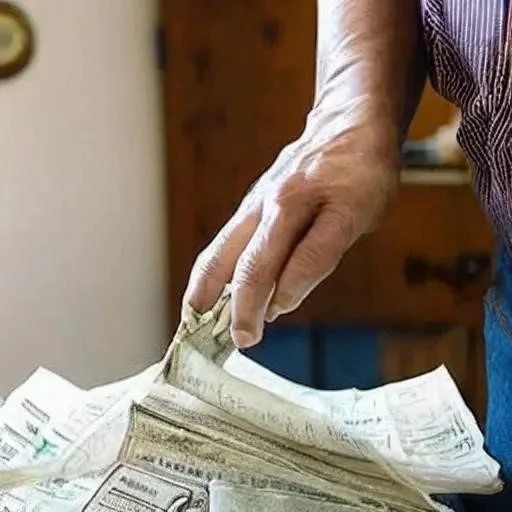
Today’s Date: 09/17/2025
In the dynamic world of personal finance, few metrics hold as much sway over your economic destiny as your credit score․ Often perceived as an enigmatic calculation, it’s a powerful gatekeeper determining everything from loan approvals to interest rates on mortgages and car loans․ At the heart of this intricate system lies a crucial, yet frequently misunderstood, component: your credit utilization ratio․ This seemingly simple percentage, reflecting how much of your available credit you’re currently using, is a paramount indicator of your financial health, profoundly influencing lenders’ perceptions and your overall creditworthiness․
For many, the idea of revisiting old debts can evoke a sense of dread or resignation, a lingering specter from past financial missteps․ However, a forward-thinking, strategic approach to these outstanding obligations isn’t merely about clearing your conscience; it’s a remarkably effective pathway to revitalizing your credit profile․ By integrating insights from seasoned financial experts and understanding the mechanics of credit reporting, we can transform the daunting task of debt repayment into an optimistic journey toward a stronger, more secure financial future․ The question isn’t whether paying old debts helps credit utilization, but rather how strategically doing so can dramatically elevate your financial standing․
Key Strategies for Optimizing Credit Utilization
Understanding and actively managing your credit utilization is fundamental to building a robust credit profile․ Here are essential strategies to keep in mind:
| Strategy | Description | Impact on Credit Utilization & Score |
|---|---|---|
| Pay Down Balances | Reduce the outstanding amounts on your credit cards and lines of credit․ | Directly lowers your credit utilization ratio, signaling responsible behavior and positively impacting your score․ |
| Maintain Open Accounts | Avoid closing old credit card accounts, especially those with a long history and zero balance․ | Preserves your total available credit and average age of accounts, preventing an artificial increase in utilization and a dip in score․ |
| Prioritize High-Interest/Past-Due Debts | Focus repayment efforts on accounts with the highest interest rates or those that are delinquent․ | Minimizes interest accumulation and addresses negative payment history, which are critical factors affecting your score․ |
| Keep Utilization Below 30% | Strive to use no more than 30% of your total available credit across all accounts․ | This is a widely recommended benchmark; staying below it demonstrates effective credit management․ Aiming for under 10% is even better for top scores․ |
| Make Timely Payments | Consistently pay all your bills and debt installments on or before their due dates․ | While not directly impacting utilization, payment history is the most significant factor in your credit score, reinforcing the positive effect of low utilization․ |
The Ripple Effect of Responsible Repayment
Consider your credit score as a financial report card, meticulously graded by credit bureaus like Experian, TransUnion, and Equifax․ Your credit utilization ratio, often referred to as the amount of credit you’re using compared to what’s available, acts as a significant “grade” in this report, accounting for a substantial 30% of your FICO score․ When you diligently pay down old debts, especially those that have been lingering, you’re not just reducing your financial burden; you’re actively recalibrating this critical ratio․ Imagine a balloon that’s been overly inflated; by releasing some air, you bring it back to a healthy, manageable size․ Similarly, reducing your outstanding debt instantly lowers your utilization, presenting a much healthier picture to potential lenders․
Industry experts consistently advocate for keeping your credit utilization below 30% across all your credit lines․ Falling below 10% positions you even more favorably, signaling exceptional financial discipline․ “Paying off debt directly translates into a lower utilization ratio, which is universally viewed as a positive by credit scoring models,” explains Lena Borrelli, a respected financial analyst․ “This practice demonstrates responsible credit behavior, a cornerstone of a robust credit score․” The impact isn’t always immediate; credit bureaus typically update scores monthly, meaning you might observe fluctuations before a sustained upward trend emerges, usually within a few weeks to a couple of months․
Navigating the Nuances: To Close or Not to Close?
While the act of repaying debt is overwhelmingly positive, the subsequent decision regarding the associated accounts demands careful consideration․ A common misconception suggests that once a debt is cleared, closing the account is the logical next step․ However, this seemingly intuitive action can, paradoxically, hinder your credit-building efforts․ Closing an old credit card, for example, reduces your total available credit․ If your remaining active accounts carry balances, this reduction in available credit can actually increase your credit utilization ratio, potentially causing a temporary dip in your score․ Furthermore, older accounts contribute positively to your “length of credit history,” another significant factor in your score․ Preserving these long-standing, paid-off accounts can therefore be a remarkably effective strategy for maintaining a healthy credit profile․
Strategic prioritization is key when deciding which debts to tackle first․ Financial advisors generally recommend focusing on past-due accounts and high-interest credit card debts․ These types of obligations can inflict the most damage on your credit score through late payment penalties and rapidly accumulating interest․ By aggressively paying these down, you not only mitigate financial bleeding but also proactively remove negative marks from your payment history, the single most important component of your credit score․ Think of it as clearing the brushfire before tending to the garden; addressing the most pressing issues first creates a stable environment for overall growth․
A Forward-Looking Path to Financial Resilience
The journey to optimal credit health is continuous, requiring diligent monitoring and consistent effort․ Regularly checking your credit reports from Experian, Equifax, and TransUnion empowers you to track progress, identify potential errors, and understand the real-time impact of your repayment strategies․ Diversifying your credit mix—responsibly managing both installment loans (like auto loans or mortgages) and revolving credit (like credit cards)—further demonstrates your ability to handle various types of debt, enhancing your creditworthiness․
Ultimately, paying off old debts is far more than a simple transaction; it’s an investment in your future, a potent catalyst for improved financial standing․ By embracing this proactive approach, meticulously managing your credit utilization, and committing to consistent, timely payments, you’re not just improving a number․ You are actively constructing a foundation of financial resilience and opening doors to unprecedented opportunities․ The future of your finances is incredibly bright, shaped by the smart decisions you make today․
